「今日は名古屋名物をご紹介します!」
= Kyou wa Nagoya meibutsu wo goshoukai shimasu!
Today, I’m going to tell you about a well-known Nagoyan speciality.
Hi, everyone! 今日も元気? ( = Kyou mo genki?) How are you doing today?
Since my previous lesson was pretty grammar intensive, why don’t we just relax today and talk about food! !Fork!
Remember what 名物 ( = meibutsu) is? (I explained it in my お土産 ( = omiyage) lesson!) It means a local food or something famous or typical of a region .(Note: It doesn’t have to be food. It could be a landmark or a person.)
Ex. 名古屋の名物は、きしめんです。
= Nagoya no meibutsu wa kishimen desu.
= A typical local dish in Nagoya is “Kishimen”
(Flat udon noodles)
手羽先 = tebasaki = chicken wings
and 味噌煮込みうどん = misonikomi udon = Miso Noodles.
Local products, vegetable, fruits, fish and etc, are called 特産品 ( = tokusanhin)
Ex. 福岡の特産品は、辛子明太子です。
= Fukuoka no tokusanhin wa, karashimentaiko desu.
= Fukuoka’s local product is spicy cod roe.
Cultural Note: 物産 ( = bussan) “(local) product”, however we don’t usually use this word alone
物産展 ( = bussanten) local food or craft work fair
Once in a while, big department stores have a 物産展 ( = bussanten) and it attracts a lot of people. According to a survey the most popular 物産展(=Bussanten) are 京都 ( = Kyoto) →京都展 ( = Kyouto ten) Kyoto fair, and 北海道 ( = Hokkaido) → 北海道展 ( = Hokkaido ten) Hokkaido fair ! I always go whenever I have a chance to go visit those local gourmet fair because it’s a great chance to do some 試食 ( = shishoku) food tasting! :D
We live in Nagoya and we have several 名物 ( = meibutsu) including above mentioned きしめん ( = kishimen) or 味噌かつ ( = Miso katsu) Pork cutlet with miso sauce. They are specifically called 名古屋めし ( = Nagoya meshi).
(めし ( = meshi) is a bit blunt way of saying ご飯 ( = gohan) rice or dishes)
My favorite 名古屋名物 ( = Nagoya meibutsu) Nagoya’s typical dish is…,
じゃ〜〜〜ん :kkk: (=Jaaaaaan!!) (a sound effect to present something. We say this often before we show something to surprise people.)
:u: :u:
What is 天むす ( = ten musu)?
It is おむすび ( = omusubi) (It is also called おにぎり ( = onigiri)), rice ball, with 天ぷら ( = tempura)!
(In case you don’t know what 天ぷら(=tempura) is, it is deep fried battered vegetable or seafood.)
Can you see 天ぷら(=tempura)? No? Then how about in this picture?
:u:
エビ(海老)の天ぷら入り ( = ebi no tempura iri), With shrimp tempura!
![]() 入り ( = iri) means to contain, include, have or with
入り ( = iri) means to contain, include, have or with
They are originally from 名古屋 ( = Nagoya) but you can buy them in many other places in Japan now.
If you have ever been to Japan, you must have had おにぎり ( = onigiri) or おむすび( = omusubi) once or twice.
There are so many kinds of おにぎり( = onigiri). Every おにぎり ( = onigiri) has something inside which is called 具 ( = gu).
You can buy all sorts of おにぎり ( = onigiri) riceballs at a convenience store.
The most traditional one is the one with 梅干し ( = umeboshi) pickled / preserved Japanese plums.
!MEMO! Here’s another cultural note :
!up! This is 梅干し(=umeboshi). If you salivate, when you see the picture, you must have tasted it before!
I bet this picture makes 99 pct of Japanese people 唾が出る ( = tsuba ga deru) = to salivate like when you see a picture of lemon! But I don’t mean it makes your mouth water — as in “makes you hungry”. I mean it actually causes our mouths to produce spit. 梅干し( = umeboshi) is very sour but it supposes to be very healthy and prevents rice from going bad. Since it does have a peculiar taste, many Japanese worry if foreigners can “handle” the taste and will often ask them,
•「梅干し食べれますか?/ 食べれる?」( = Umeboshi taberemasu ka? / tabereru?) or
•「梅干し大丈夫(ですか)?」( = Umeboshi daijyoubu (desuka)?).
Another unpopular food among foreign people is 納豆 ( = nattou) ,fermented soybeans, Many foreigners hate it because of its stickiness, smell, and taste.)
So I can guarantee(!?) that some Japanese people might ask you if you like 納豆 ( = nattou) or not while you are in Japan. But please don’t get annoyed. They could be just curious but some of them are just being overly careful not to give you anything strange.
Anyway, おにぎり ( = onigiri) is a very handy meal to take out for lunch. It has been one of 母の味 ( =haha no aji) homemade cooking like mom used to make.
However, nowadays, you can buy them anywhere including コンビニ ( = konbini) convenience stores.
:n: Have you ever heard or seen the word, B級グルメ ( = Bii kyuu gurume)? I don’t think it is in the dictionary yet.
•グルメ ( = gurume) is a word which comes from gourmand or gourmet.
•マギーはグルメだ。
= Maggie wa gurume da.
= Maggie is a gourmet.
•マギーはグルメな食べ物ばかり食べている。
= Maggie wa gurume na tabemono bakari tabeteiru.
= Maggie always eats gourmet food.
•グルメ番組
= gurume bangumi
= TV program which introduce lots of gourmet food.
•グルメレポーター
= gurume repootaa
= A reporter for gourmet TV shows.
Note : If you watch Japanese TV all day long, I am sure you will encounter one of our many グルメ番組 ( = gurume bangumi) Many Japanese people are obsessed with food!
The reporter for the グルメ番組 ( = gurume bangumi) or 旅番組(=tabi bangumi) Travel TV show are called グルメレポーター ( = gurume repootaa). They have to show viewers how delicious the food through their words and facial expressions. (彦摩呂 ( = Hikomaro) is a グルメレポーター( = gurume repootaa) well known for his rich but comical gastronomical vocabulary. 石塚英彦 ( = Ishizuka Hidehiko)a.k.a. 石ちゃん ( = Ishichan) is another very popular グルメレポーター ( = gurume repootaa) and one of my favorites!)
•級 ( = kyuu) ranking or grade
Ex. 日本語能力試験1級 ( = Nihongo nouryoku shiken ikkyuu) JLPT level 1
B級 is second grade.
![]() Ex. B級映画 ( = bii kyuu eiga) Low budget indie movie.
Ex. B級映画 ( = bii kyuu eiga) Low budget indie movie.
So B級グルメ( = bii kyuu gurume) is 安くて ( = yasukute), cheap, 庶民的 ( = shominteki) casual でも美味しい ( = demo oishii) but delicious, fast food!
•庶民 ( = shomin) = 大衆 ( = taishuu) regular people, common people.
![]() •庶民的 ( = shominteki) casual, for regular people.
•庶民的 ( = shominteki) casual, for regular people.
![]() 庶民的な食べ物
庶民的な食べ物
= shomintekina tabemono
= casual food for regular people.
代表的なB級グルメ ( = daihyoutekina B-kyuu gurume) Typical B-rank gourmet food:
•焼きそば ( = yakisoba) fried noodle
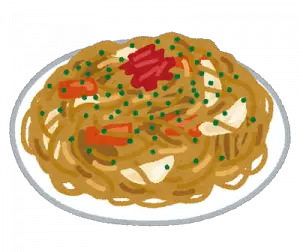
•たこ焼き ( = takoyaki) octopus balls /dumplings (蛸/タコ = tako).
•お好み焼き ( = okonomiyaki) So called Japanese pizza.
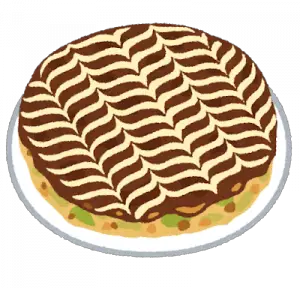
•ラーメン ( = ramen) ramen noodles
•餃子 ( = gyouza) fried dumpling
Every region has its popular B級グルメ ( = biikyuu gurume) which is called ご当地グルメ ( = gotouchi gurumet) local B-rank gourmet. It doesn’t have to be traditional Japanese food.
Ex. スープカレー ( = suupu karei) Soup curry from Hokkaido!
So, one of famous Nagoya’s ご当地グルメ ( = goutouchi gurume) is 天むす ( = tenmusu), rice balls which have shrimp tempura inside.
Now, Japan is a small country but every region has a different type of food. Local food is called 郷土料理 ( = kyoudo ryouri).
The following is a list of just somewell known 郷土料理 ( = kyoudo ryouri)
Note :
•北海道 ( = Hokkaidou) :石狩鍋 ( = ishikari nabe) Nabe (=pot) dish with salmon and vegetable in miso (=bean paste) broth or ジンギスカン ( = jingisukan) Mutton barbecue
•秋田 ( = Akita) :切りたんぽ ( = Kiritanpo) Nabe with vegetable and rice bar.
•仙台 ( = Sendai) :牛タン料理 ( = Gyutan ryouri) Ox tongue dishes
•東京 ( = Tokyo) :*もんじゃ焼き ( = Monja yaki) watery type of Okonomiyaki
•京都 ( = Kyoto) :湯豆腐 ( = Yudoufu) Tofu nabe(=pot)cuisine
•大阪 ( = Osaka) :*お好み焼き ( = Okonomi yaki) So-called Japanese pizza on Teppan(=iron plate).
•香川県 ( = Kagawa) :*讃岐うどん ( = Sanuki udon) Sanuki Noodles
•広島 ( = Hiroshima) :*広島焼き ( = Hiroshima yaki) Similar to Okonomiyaki but it is very thick and has noodles in it.
etc.
郷土料理 ( = kyoudo ryouri) local dishes, are not necessarily cheap. Some of them are expensive. But if they are cheap and eaten in casual settings, (I marked with *), we call them ご当地B級グルメ ( = gotouchi bii kyuu gurume). As I mentioned above, it is a relatively new term. But if you search with B級グルメ ( = bii kyuu gurume) or ご当地B級グルメ ( = gotouchi bii kyuu gurume) on the internet, you will get tons of hits.
(B級グルメ ( = biikyuu gurume) is not just for Japanese food. For example Also タコス ( = takos) Tacos, ハンバーガー ( = hanbaagaa) Hamburgers are all B級グルメ! ( = biikyuu gurume)
There is always a long list of B級グル メ(= biikyuu gurume) in guide books for Hawaii, such as スパムむすび(=Supamu musubi) rice ball with Spam, ロコモコ(=Roco moko) Loco Moco, etc.
So if you have a chance to visit Japan, don’t just go to expensive restaurants or fast food restaurants. Be sure to try lots of ご当地B級グルメ ( = gotouchi bii kyuu gurume)!!
:) 「欲しい?」
= Hoshii?
= “Do you want it?”
:maggie-small: 「早くオクレ〜!!」
=Hayaku okureee!
= “Give it to me now!! “
•欲しい ( = hoshii) to want
Ex. これが欲しいです。( = Kore ga hoshii desu.) I want this.
•早く ( = hayaku) hurry up! Now!
•オクレ/おくれ ( = okure) Give me (something)! =ちょうだい!/頂戴!(=Choudai) more formal
→下さい( = kudasai) “Give me (something)!”
〜しておくれ ( = shite okure) imperative form “Do ~! “ Kind of old fashioned way to ask a favor which is used by especially aged people. It sounds somehow humorous.
Ex. 許しておくれ! ( = Yurushite okure) = 許してちょうだい/頂戴 ( = Yurushite choudai)
→more formal 許して下さい。( =Yurushite kudasai.) Please forgive me.
 マギー先生より =Maggie Sensei yori = From Maggie-Sensei
マギー先生より =Maggie Sensei yori = From Maggie-Sensei
皆の国にも美味しいB級グルメがあったら教えてね!
= Minna no kuni nimo oishii bii kyuu gurume ga attara oshietene.
= Do you have any “B-kyu-gourmet” in your countries? What are they?
***
Will you be my Patron?
I appreciate your support! サポートありがとう!

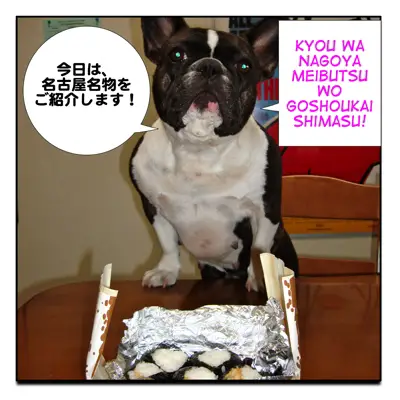
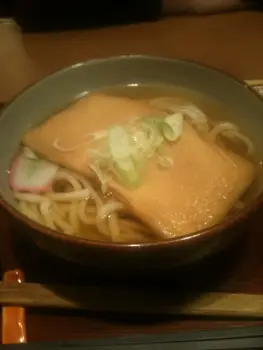
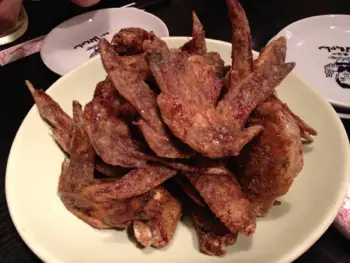

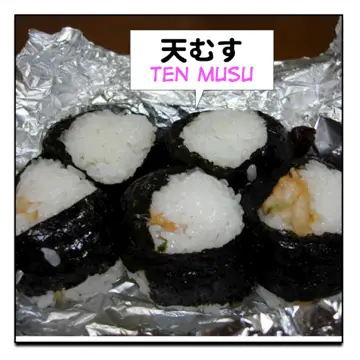
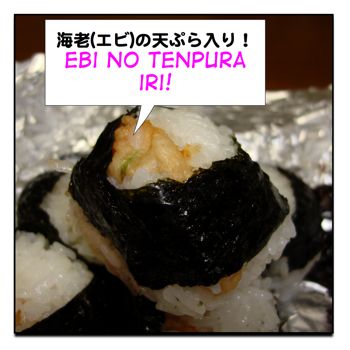



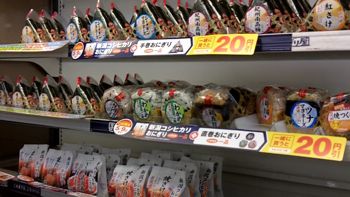
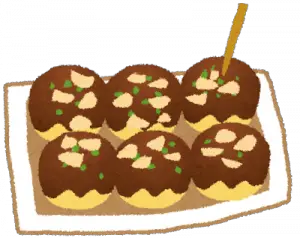
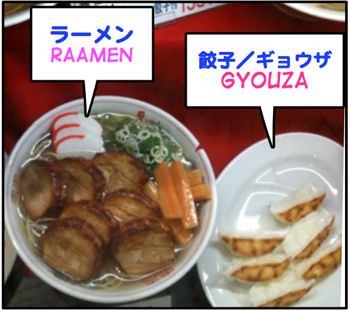


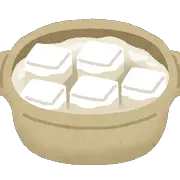
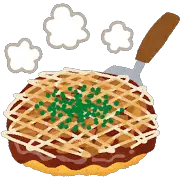
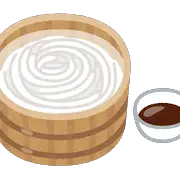


8 Comments
勉強になりました。ありがとうがざいます。
@Nadeshiko
こちらこそ、このサイトに来てくれてありがとうございます!また来てくださいね。:)
唾が出る this kanji 出る is used in the expressions like “hana ga deru” too ne?^^ my computer doesn’t have japanese on it ;; but I promise I know hiragana and katakana ^^ and some kanji ne :)
my computer doesn’t have japanese on it ;; but I promise I know hiragana and katakana ^^ and some kanji ne :)
ah so ばかり means always?
sensei, hontou ni arigatou !!!! itsumo yasashii da yo!! :) romaji gomenne
I remember when my japanese friend brought me natto and I LIKED IT! I really did^^ her face was SO funy she was like “eeeeee u liked it?? I haven’t met a gaijin who does o_O” heheh she was cute :) I wanna try umeboshi>< and okonomiyaki toka takoyaki toka all all I wanna try it all!! but I m on the other side of the Pacific
B kyuu stuff here would be: hamburgers, tacos, enchiladas (and lots of other "mexican" food) toka hot dogs toka corn dogs toka pizza toka "breakfast menus" that include (iri is the word ne?^^) pancakes, waffles, sausage, bacon, omelettes, oh also stuff like chicken (either roast chicken which is like $5 for a whole chicken, or fried chicken buscuit^^) oh CHEESE is meccha meccha popular! stuff like fried cheese sticks and fried cheese balls yeah^^
you ever been in the US?^^
@Aki
Right 鼻が出る uses the same kanji.
ばかり : Ah I translated as “always” here but it also means “only” or “just”
Ex. 今食べたばかりだ。
= Ima tabeta bakari da.
= I just ate now.
Ex. N.Y.には行ったばかりです。
= N.Y niwa itta bakari desu.
= I just went to N.Y.
Ex. マギーはいつも勉強ばかりしている。
= Maggie wa itsumo benkyou bakari shiteiru.
= Maggie is always studying. (nothing else)
Ex. 彼はAkiにばかり優しい。= Akiにだけ〜
= Kare wa Aki ni bakari yasashii.
= He is sweet only to Aki.
Great! I love people who are willing try different food!
Oh I love tacos and enchilada…Fried cheese sticks & balls?? Yummy! I’d love to try them!
Yes! I have been to the US many times.
okie, then when u come again if u come somewhere close to me (I live in Iowa but Chicago, Minneapolis and some other big cities are kinda close) if we can meet up I’ll treat u a meal, sensei ^^ (I know some good places in most of the major cities dakedo)
@Aki
やさしい!How sweet!! I have never been there. Will be super fun to see in you in person someday! !ochame!
このレッスン、美味しかった。。。
jeremyさん
“美味しい”レッスンでお腹一杯になったかな?